Where Fact And Fantasy Tragically Collide
DIRECTED BY JOHN BRAHM/1945
STREET DATE: NOVEMBER 21, 2017/KINO LORBER STUDIO CLASSICS
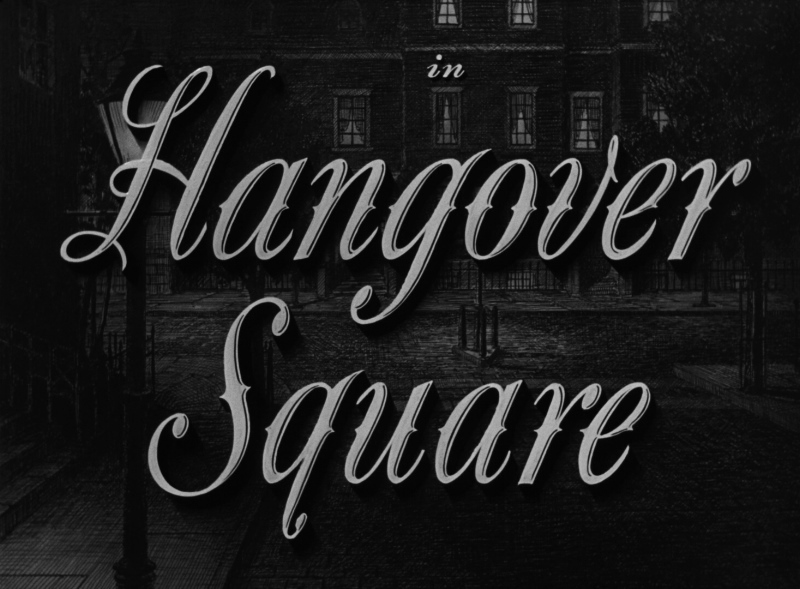
 Three walks around in the morning and a stop off at the nearest pub begins the legendary cure for an evening’s carousing near London’s Hangover Square. Recreating the gaslight and fog era of Edwardian England, revisiting both the atmospheric milieu and expansive sets created for 1944’s Twentieth Century Fox thriller The Lodger, the film also reunites its two stars, Laird Cregar and George Sanders – again playing murderer and pursuing detective, respectively – with stylish director John Brahm. “Passion! Obsession! Insanity! Murder!” reads the vintage poster included as the cover image for Kino Lorber’s 4K restoration Blu-ray of the period thriller, and Hangover Square certainly lives up to those exclamations with the added and unusual twist of musical mayhem. With the discordant clang of gas pipes falling in a ditch, or the cacophonous clatter of scattering violins, the ganglion grasp on the lower neck nerves of promising musician and composer George Harvey Bone (Cregar) searingly dispatches his finer and nobler impulses, replacing his sensitive artist’s soul with that of a brooding homicidal maniac. And then the hangover really begins.
Three walks around in the morning and a stop off at the nearest pub begins the legendary cure for an evening’s carousing near London’s Hangover Square. Recreating the gaslight and fog era of Edwardian England, revisiting both the atmospheric milieu and expansive sets created for 1944’s Twentieth Century Fox thriller The Lodger, the film also reunites its two stars, Laird Cregar and George Sanders – again playing murderer and pursuing detective, respectively – with stylish director John Brahm. “Passion! Obsession! Insanity! Murder!” reads the vintage poster included as the cover image for Kino Lorber’s 4K restoration Blu-ray of the period thriller, and Hangover Square certainly lives up to those exclamations with the added and unusual twist of musical mayhem. With the discordant clang of gas pipes falling in a ditch, or the cacophonous clatter of scattering violins, the ganglion grasp on the lower neck nerves of promising musician and composer George Harvey Bone (Cregar) searingly dispatches his finer and nobler impulses, replacing his sensitive artist’s soul with that of a brooding homicidal maniac. And then the hangover really begins.
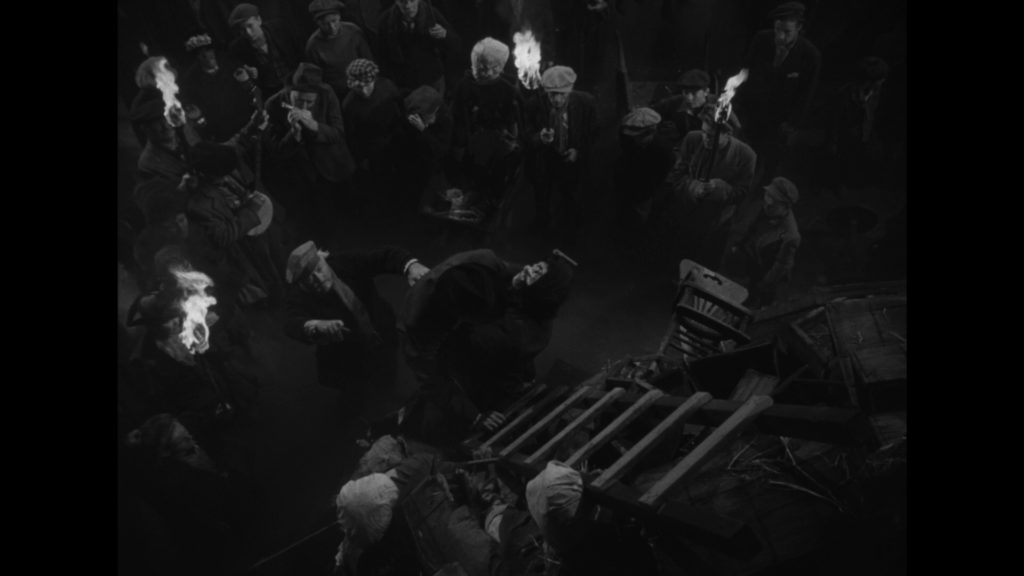
Writing against my own finer impulses, particularly the closer view that its evocative mid-40s black-and-white images might normally call for, Hangover Square comes with unusually timely resonance this evening, November 5th, as the anniversary upon which one of the great screen conflagrations was committed to film. From a towering heap of masked effigies and refuse, a Guy Fawkes pyre reaches like an inky black finger to the night sky, the very top of which conceals the fulsome form of late music hall performer Netta Longdon (Linda Darnell) behind a mask and robe. Placed there by the amnesiac who murdered her, strapped like a gunny sack over his shoulder as he struggled up the length of a rickety ladder, the billowing smoke of the spectacular scene rises to nightmare heights even as the unknown ashes of this immolated inamorata fall on the revelers below. That the actress playing the tragic Netta would herself die tragically in a fire makes the scene all the more resonant.

Famed screen wit George Sanders, as Dr. Allan Middleton, may have been bored with the admittedly boring role of a proto-forensics expert and canny Scotland Yard detective, but his performance is typically flawless with the diction and letter-perfection of a great grammarian. The stentorian ripple with which Sanders as Middleton delivers lines like “No, Mr. Bone, the most important thing is your life” commanded the attention of this audience of one with the screen authority born of the best Classic Hollywood personalities. That he would himself take leave of his life with a suicide note that famously included the opening line “Dear World, I am leaving because I am bored” tragically captured the witty world-weariness with which the actor infused all his roles. After 40 years of playing offhand characters like this one, George Sanders’ screen persona apparently engulfed him with the consuming force of flames so prominently featured in Hangover Square: in the end, it would appear he did care after all.
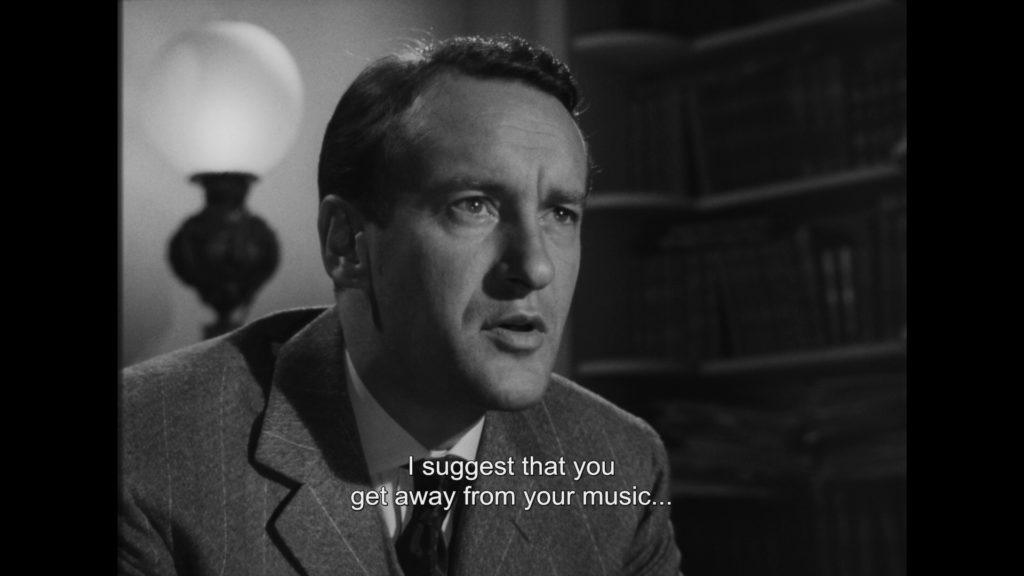
As realized by a crack technical team that included Academy Award-winning cinematographer Joseph LaShelle (for 1944’s Laura), Hangover Square is a triumph of atmosphere and style that answers any possible shortcoming of its simmering story or dreamy dialogue with an operatic intensity gifted by composer Bernard Hermann – whose Concerto Macabre, written specially for the film, borders on the movie-musically miraculous – and the enjoyably florid direction – there’s simply no angle left un-tilted or set uncovered in fog – of German Expressionist emigre John Brahm.
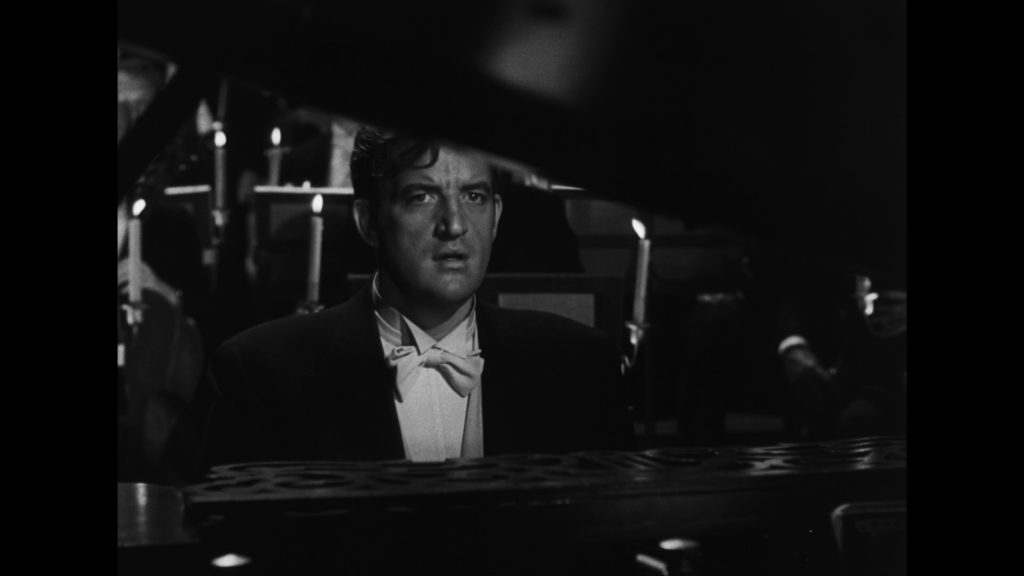
The considerable technical specifications of the film, however, are superseded and quite literally overshadowed by the final and greatest tragedy of both the bizarrely sympathetic murderer and the actor playing him, who passed away two months before the film was released at the untimely age of 31. Screen heavy Laird Cregar had essayed an entirely unique, indeed singular, career in the annals of Hollywood as a 300 lb. villain for whom audiences quite often felt a greater affinity than the pictures’ nominal leads. Top-billed in his final performance, the once full and vigorously bursting physical frame of the actor visibly deflates from film frame to frame; the inner demons that pursued him throughout his many outsize performances consuming him from within, apparently, with again the Hangover Square force of flame. Billowing smoke rising from a concert hall stage, his Concerto Macabre echoes well beyond the last frame as the actor, character, and human being makes his final appearance on film.
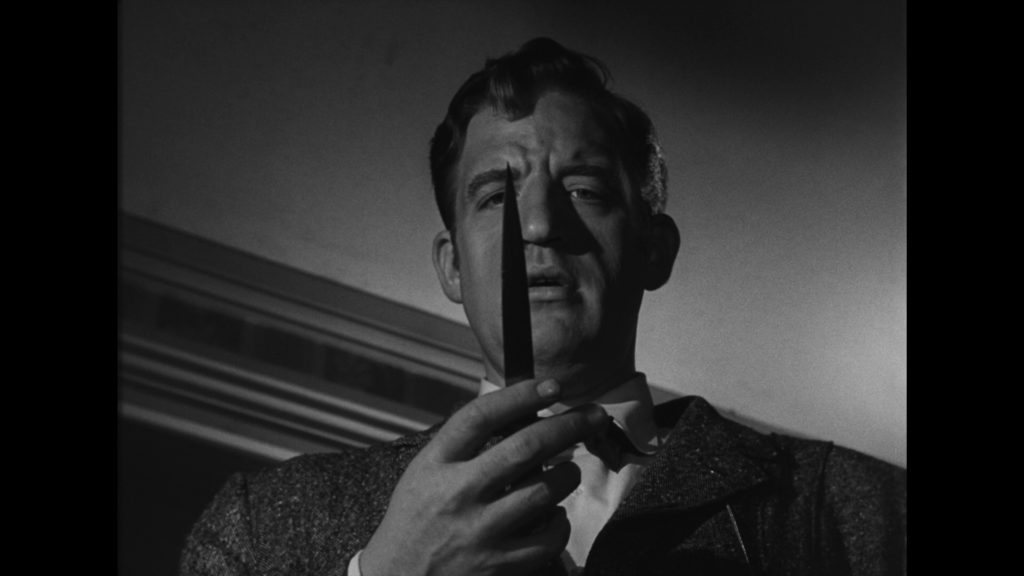
Kino Lorber’s beautifully detailed and finely textured images are simply the best reproduction on home video we are likely to get of Hangover Square. The picture sears and the soundtrack crackles with the film’s frequent (and here frequently repeated) recourse to flame. Two commentary tracks, one by the late Richard Schickel and the other by Steve Haberman, with recorded comments from cast member Faye Marlowe, are respectively fine and as an enthusiast for the audio commentary I can honestly say I enjoyed them both not only for their entertainment value but also for the many observations and asides I unabashedly “borrowed” in the writing of this review. (With, of course, apologies and thanks to both.) A quite informative documentary short on the life of Laird Cregar titled The Tragic Mask also gives a good background on the full tragedy and genius of the actor’s life, and a vintage radio adaptation of Hangover Square starring Cregar’s eulogist Vincent Price, assuming the role of the tragic Bone, entirely supports film historian Haberman’s rather brilliant assertion that Price essentially had the career Cregar might have enjoyed had he not died so tragically young. Hangover Square may be just a movie, but it also appeared to be the great Fox movie set – today, actually, it just happens to be known as Century City – where fact and fantasy once tragically collided.
All images used in this review are credited to DVDBeaver and are taken directly from Kino Lorber’s Blu-ray release.

